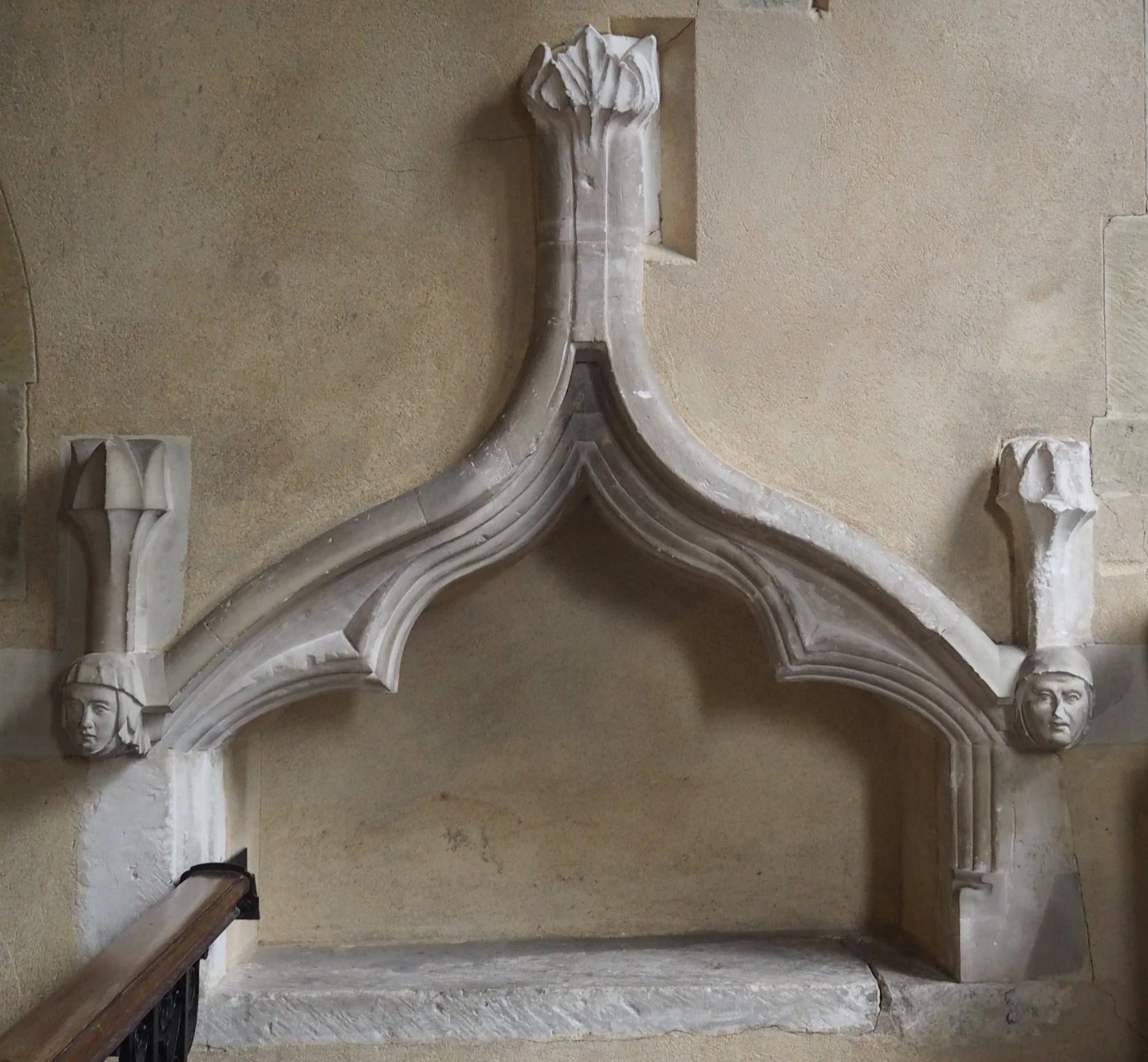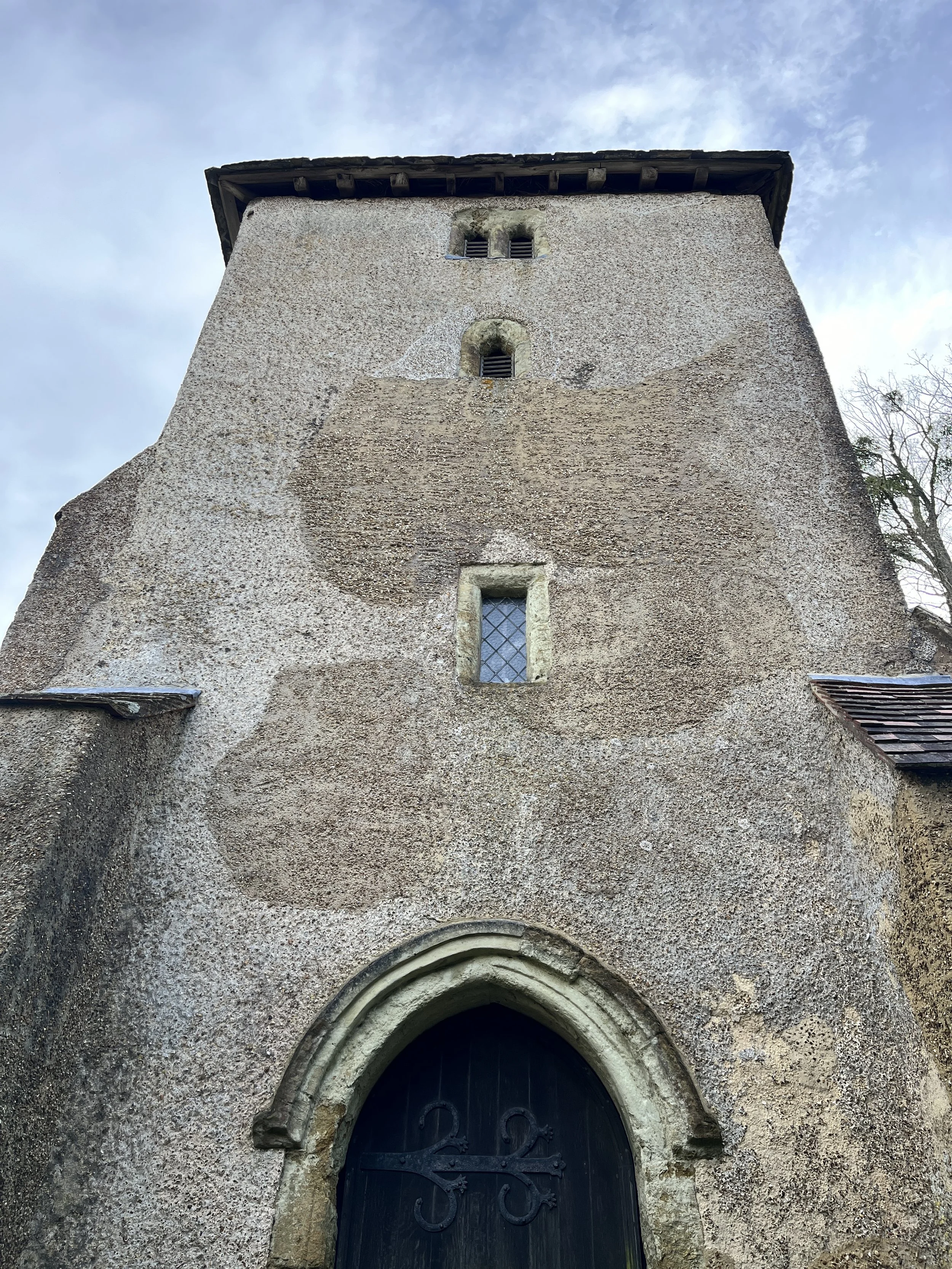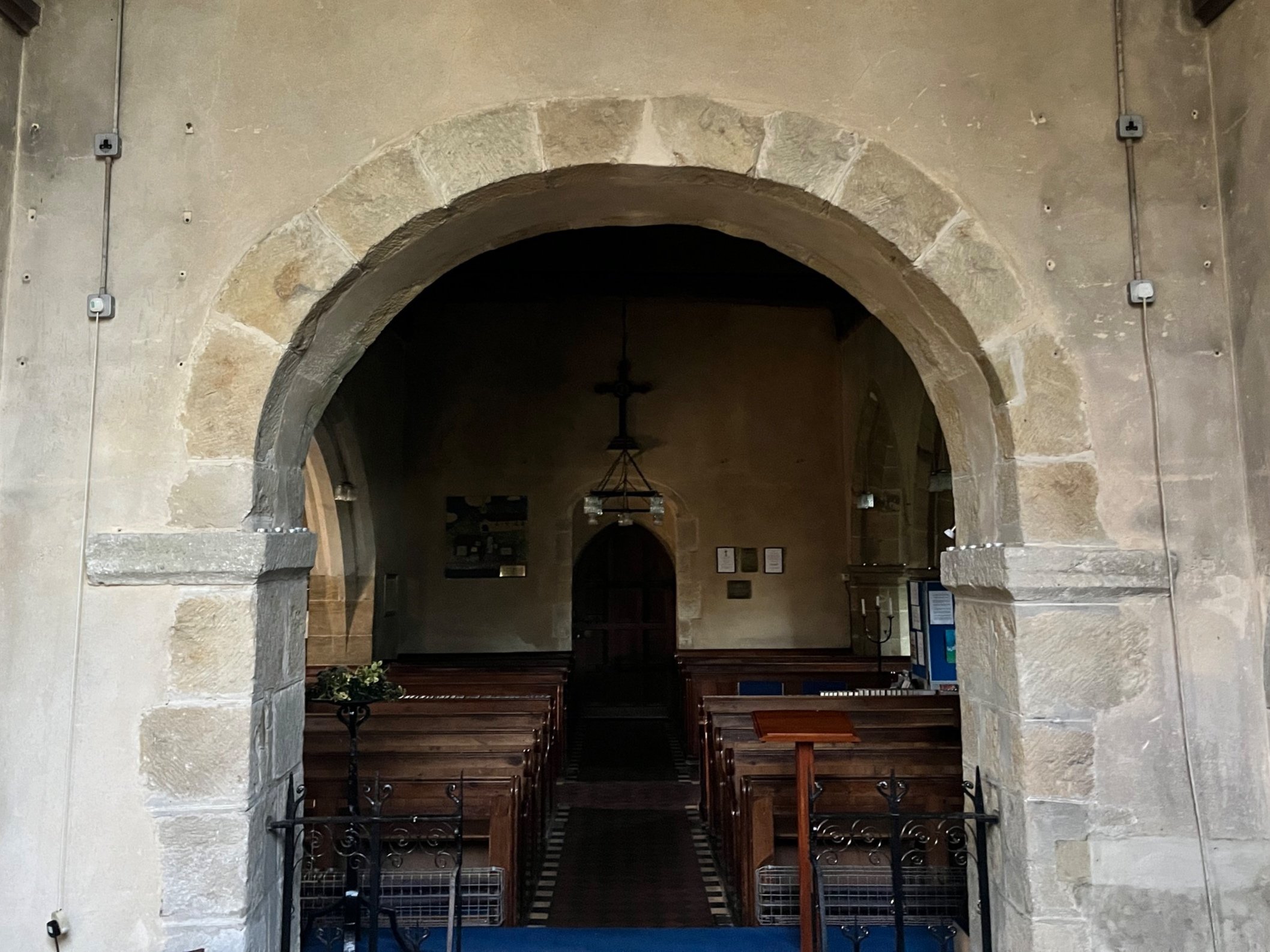Cocking Church—as it was known for most of its history—was built sometime in the 11th century, very early in Norman times: the oldest part of the church, the chancel arch has been dated to ca. 1080. This building likely replaced an older Saxon church, with some believing that there was a wooden church here as long ago as the 7th century.
The font is likely from the 12th century, though some have argued for an older Saxon date, which would mean that it predates the church itself and is the only surviving evidence of an earlier building.
Around 1300, the south aisle and tower were added, though the bells are dated to the 15th century. An Easter Sepulchre was also added to the chancel around this time, possibly making it the oldest in Sussex.
It is difficult to know what the church looked like in its early years, as so little of that original building survives. However, there is a little fragment of a mural in what was the splay of the window of the original Normal church, only uncovered in the 19th century. It dates from ca. 1220, and depicts a Christmas scene: shepherds (and a dog!) are staring up at the Star of Bethlehem, their attention directed to it by an angel’s arm, holding a palm branch. We can only imagine what other murals decorated the walls of the church in earlier times!
Today, the church serves as the parish church for the villages of Cocking and West Lavington, whose own parish church of St Mary Magdalene sadly closed in 2008. In 2007, the church—which, rather unusually, lacked any saintly dedication—was dedicated to St Catherine of Siena, on the basis that one of its 15th century bells bears the name “Sancta Catrina”. In 2024, a new painting of St Catherine—a copy of an original painted during her own lifetime—was brought from Siena to be placed in the Lady Chapel.
The parish church is never locked: it is open at all times as a symbol of hospitality, and as a space of peace and refuge. Its visitors book contains many messages appreciating not only the church’s beauty, but also expressing gratitude for a shelter from weather and even danger.




